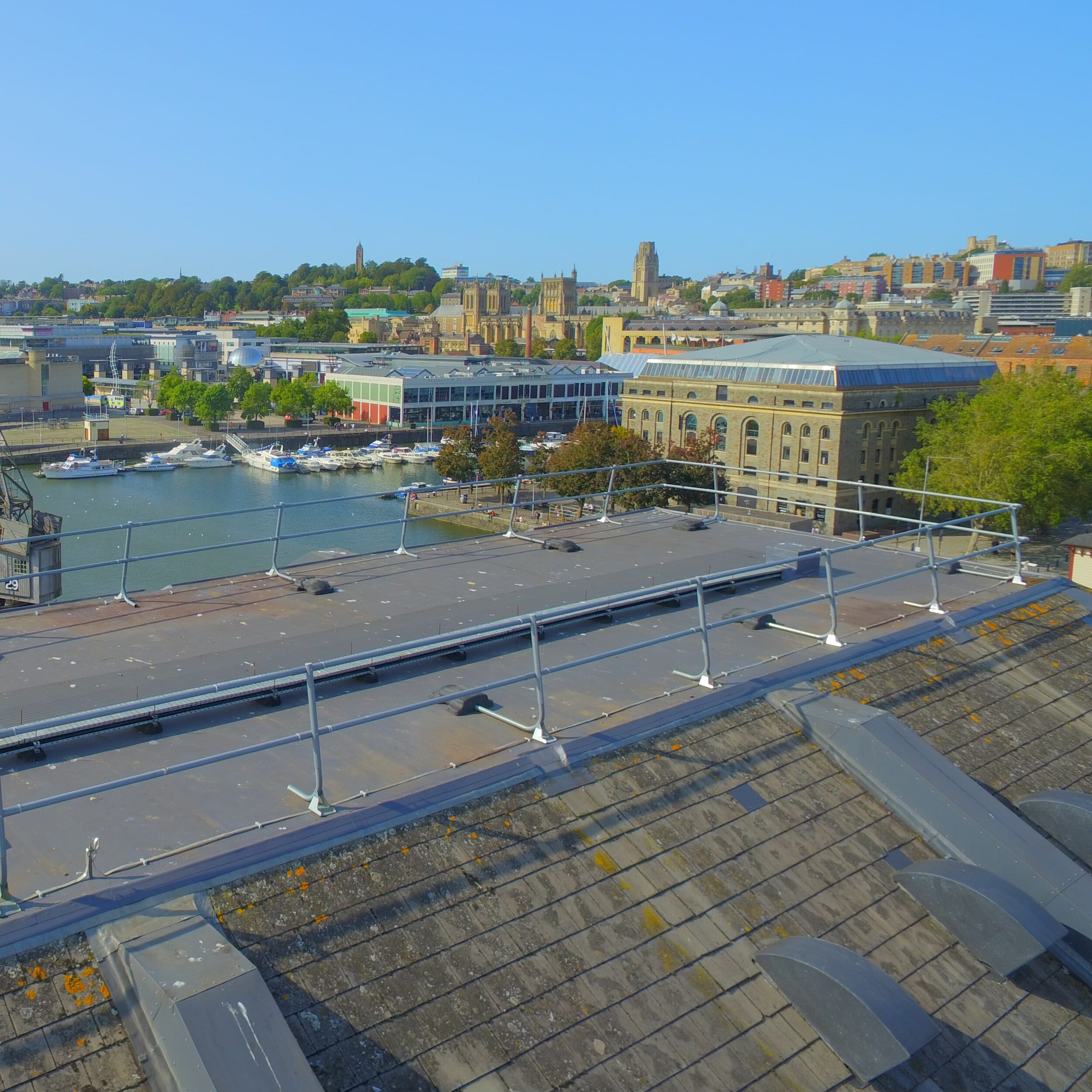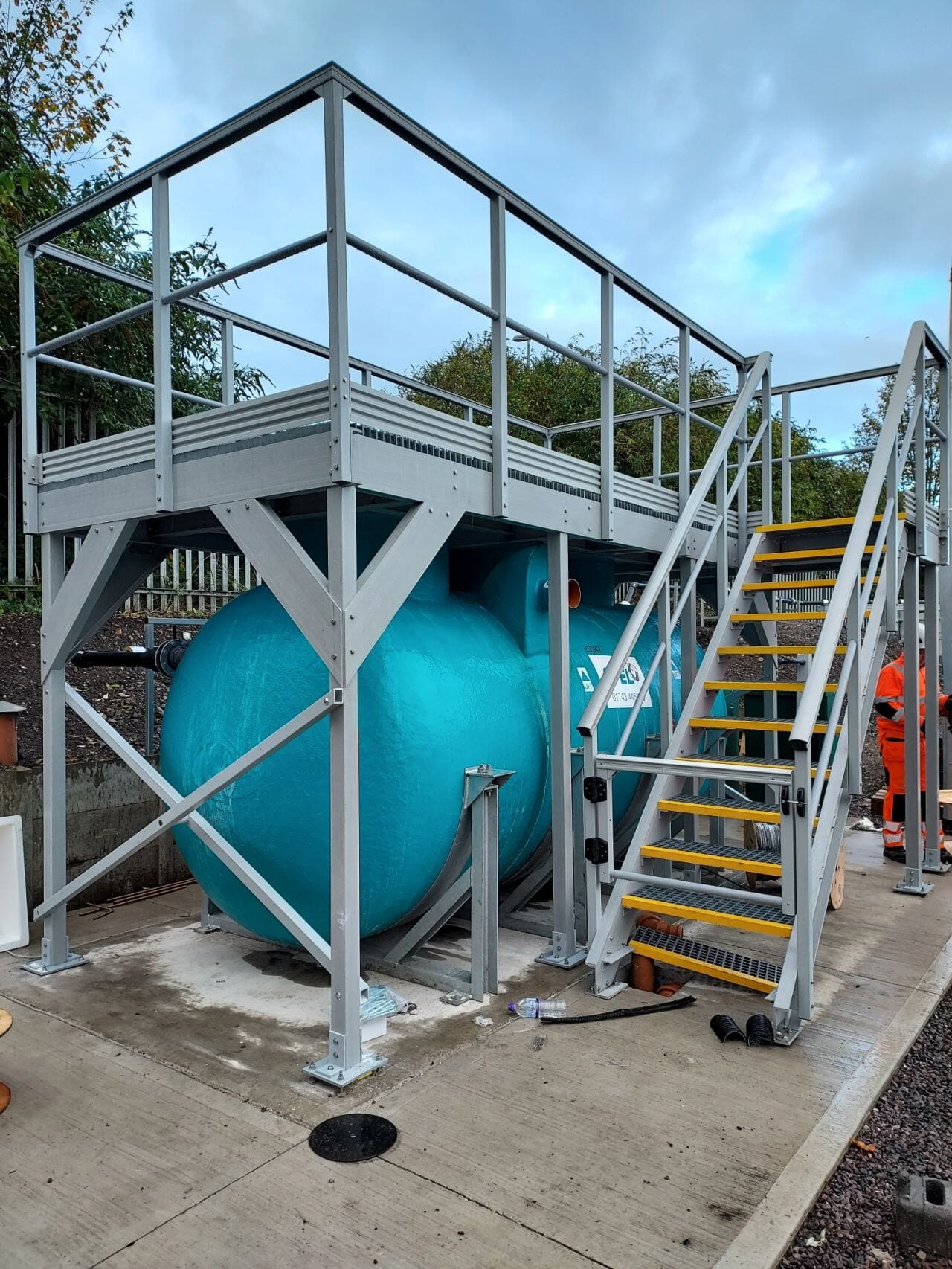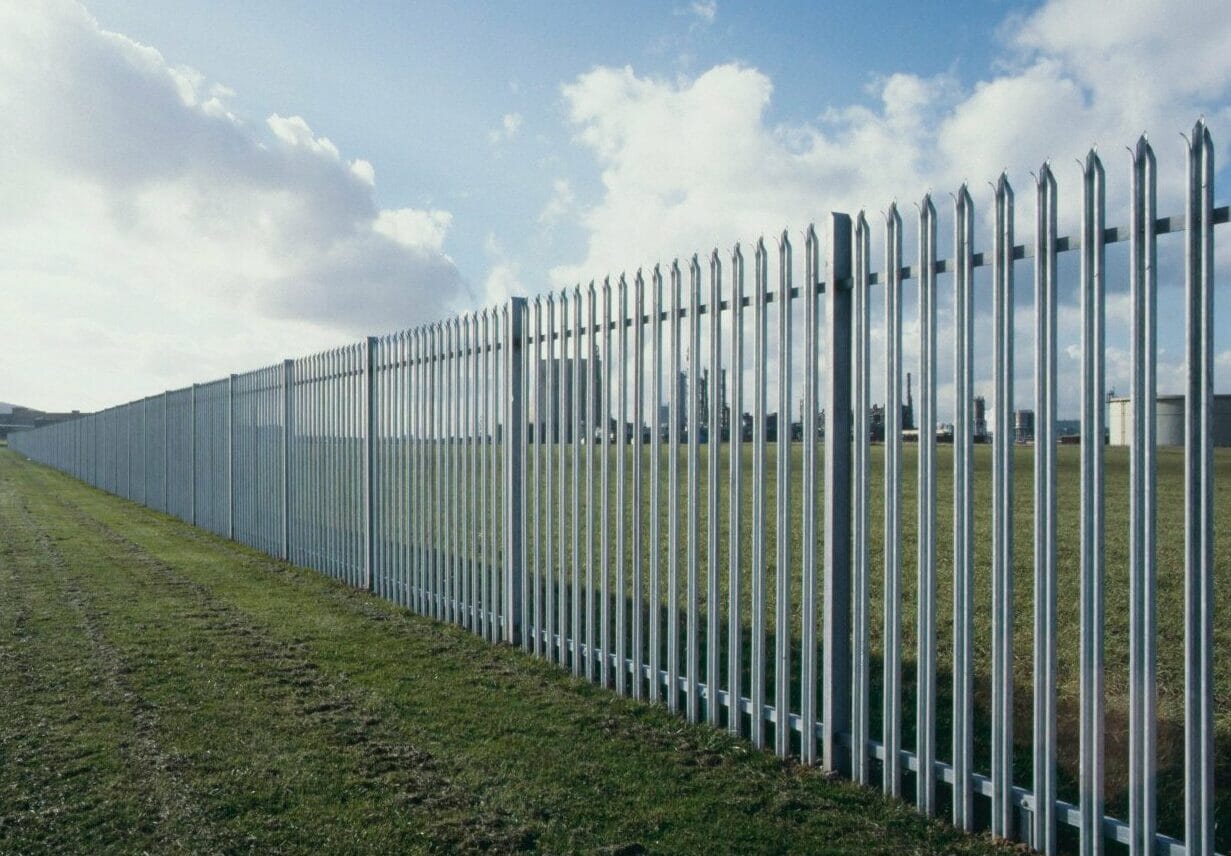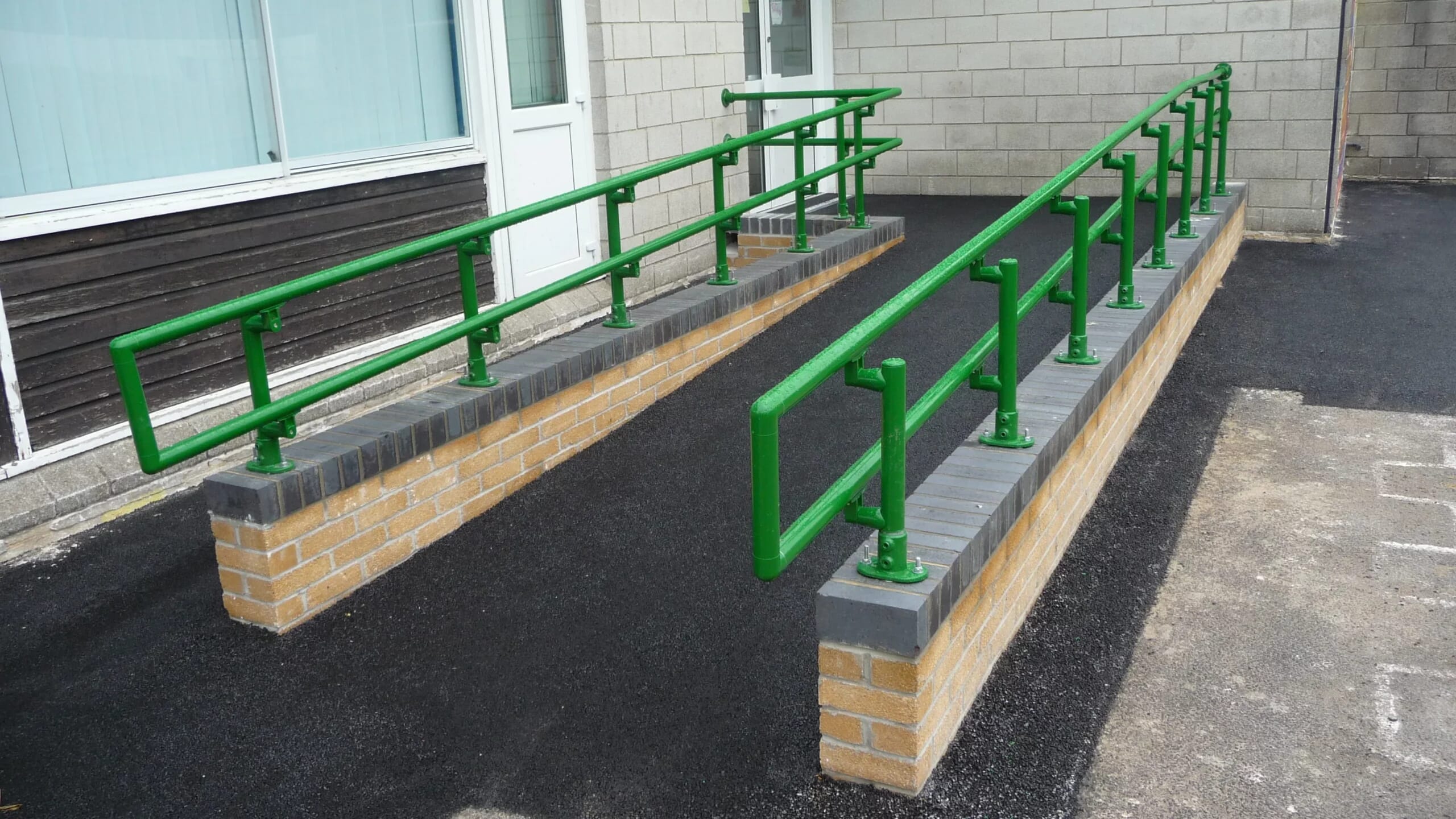When to provide roof edge protection
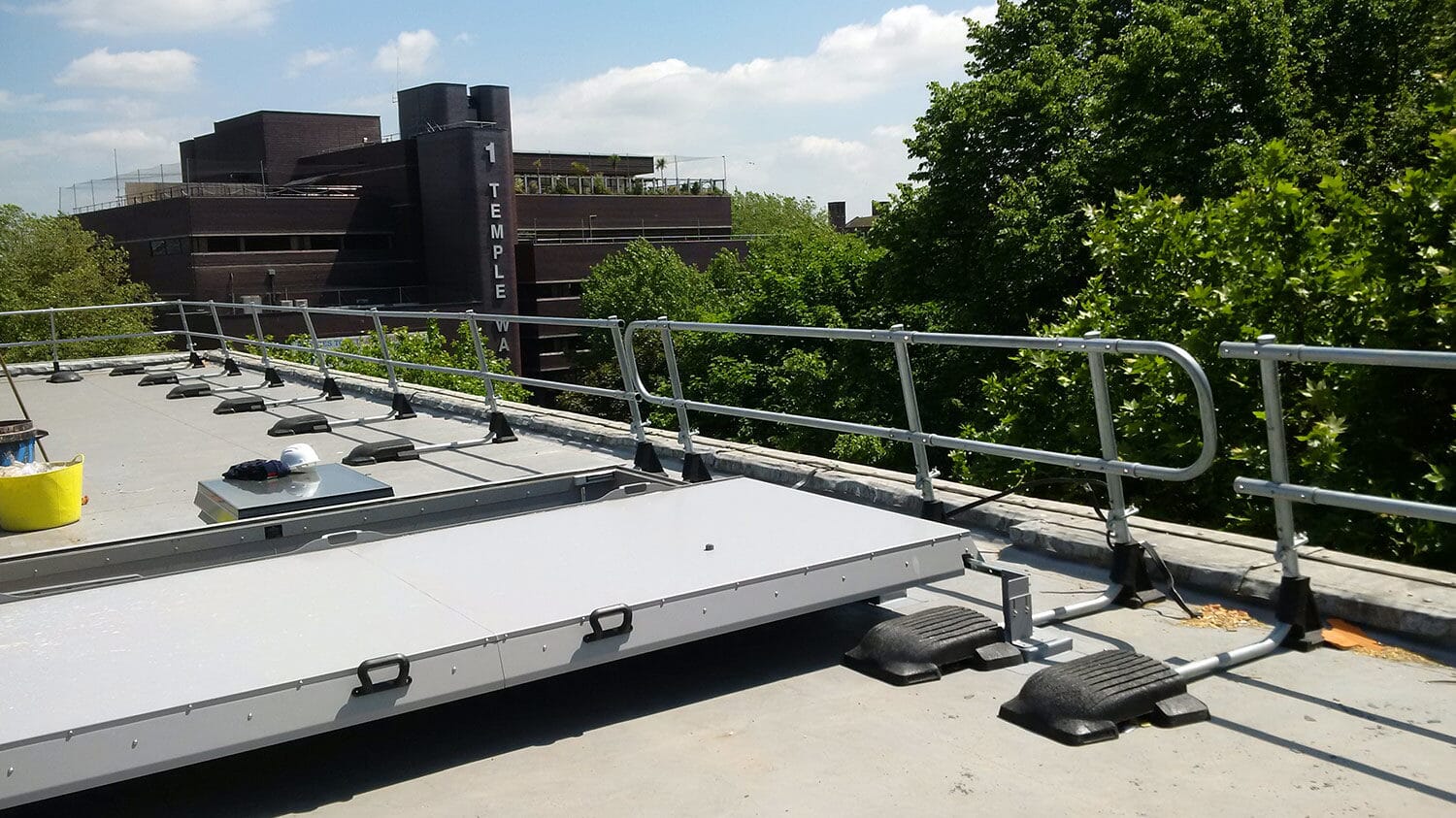
Falls from height are one of the biggest causes of workplace injuries and fatalities in the UK. According to the HSE, 50% of fatal workplace accidents in the UK during 2023/24 were due to falls. In many of these cases, appropriate roof edge protection could have made all the difference.
If your staff require access to a roof for maintenance, inspections, plant servicing, or installation work, roof edge protection requirements must be taken seriously. In this guide, we explain when roof edge protection is necessary and explore the different types of edge protection systems, so you can ensure your personnel are adequately protected from falling.
What is roof edge protection?
Roof edge protection is a safety system that is designed to prevent people or objects from falling over the edge of a roof. These systems form a physical barrier around the roof perimeter, usually in the form of a guardrail, which helps to reduce the risk of injuries and supports compliance with UK health and safety regulations.
When is roof edge protection required?
Roof edge protection is required anytime work is performed on a roof. There’s no minimum height threshold – if a fall could result in serious injury, then edge protection is required. Even if the work is infrequent or short-term, the risks remain high, as any unprotected side or edge is a potential fall hazard.
You’ll typically need roof edge protection for the following tasks:
- Conducting rooftop maintenance or inspections
- Accessing plant or mechanical equipment
- Installing or servicing solar panels
- Undertaking rooftop construction or refurbishment projects
Roof edge protection regulations
To meet the UK legislation for health and safety when working at height, your roof edge protection system must comply with several key standards. These include:
- The Work at Height Regulations 2005. This requires guardrails to be of sufficient strength and rigidity for the application in question. The top rail should be at least 1100mm high, with a mid-rail position no more than 470mm below.
- UK Building Regulations Part K. This specifies the need for two horizontal guardrails on rooftops as a minimum.
- BS EN 13374:2013. This outlines the requirements and test methods for temporary edge protection systems during construction and maintenance.
Read our dedicated blog post on roof guardrail regulations for further information.
Types of roof edge protection
There’s no one-size-fits-all solution when it comes to edge protection. Depending on the application, some roof edge protection options have clear advantages over others. Here are the main types to consider:
Scaffolding
Scaffolding offers a reliable temporary edge protection solution for construction sites. It can be quickly erected and dismantled, and is flexible enough to suit a wide variety of building shapes and heights. However, scaffolding requires time and effort to install and take down. It is also unsuitable for long-term use or on buildings that remain occupied.
Fixed roof handrails
Fixed roof handrails are typically found on concrete or steel roof surfaces. They provide a permanent and robust barrier, making them ideal for rooftops with frequent foot traffic. The downside is that installation involves drilling into the roof membrane, which can compromise waterproofing if not properly sealed.
Freestanding roof guardrails
Freestanding roof guardrails are a popular choice for schools, factories, hospitals, and buildings fitted with solar panels. These systems are easy to install without the need for specialist tools, and they don’t require any drilling into the roof surface. The counterweighted design provides strength and stability, and they can also be collapsed for aesthetic purposes.
For a closer look at the benefits of this type of system, check out our comprehensive freestanding roof edge protection guide.
Why choose freestanding roof guardrails from Ezi Klamp?
Ezi Klamp’s freestanding roof guardrails are specifically designed with safety, speed, and compliance in mind. Here’s why our system is trusted by clients all over the UK:
- No need to drill into or penetrate the roof surface
- Comes in kit form for easy installation – no special tools or training required
- Built from sturdy galvanised steel with stainless steel fixings for long-term durability
- Fully compliant with all relevant safety standards, including BS EN 13374:2013
- Low maintenance and weather-resistant
- Uses recycled rubber counterweights for added safety
So, whether you’re overseeing a school, hospital, industrial facility, or a commercial rooftop with solar panels, our roof guardrails are guaranteed to keep your site secure and compliant. Contact us today to discuss your roof edge protection requirements.
